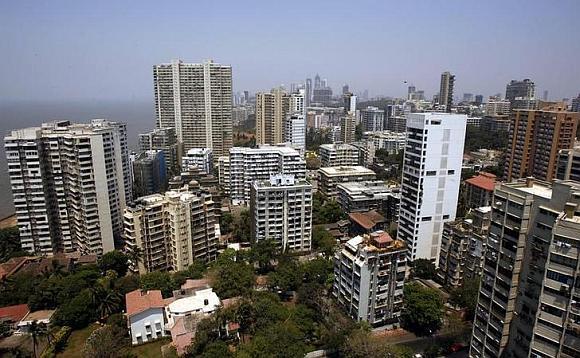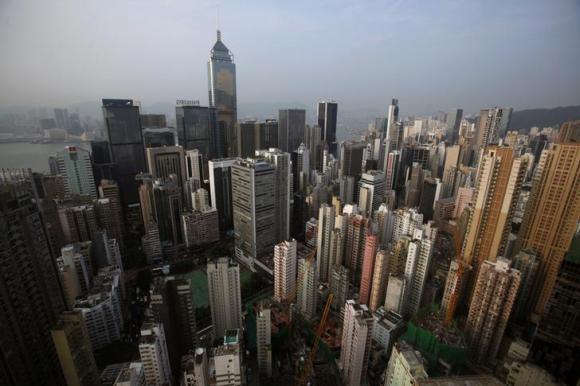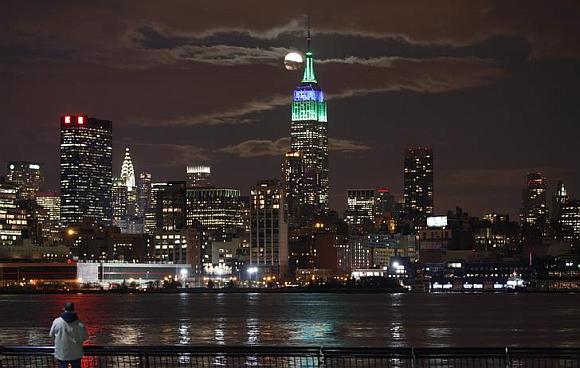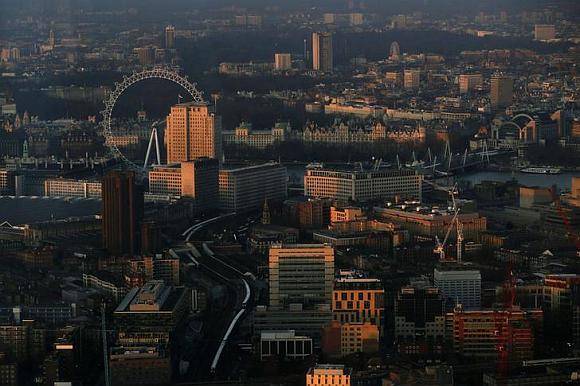Photographs: Punit Paranjpe/Reuters Aabhas Sharma in New Delhi
In July last year, industrialist Sajjan Jindal bought an apartment on the 28th floor of Tanhee Heights on Napean Sea Road for Rs 39 crore (Rs 390 million).
The apartment was 3,328 square feet in size, which means Jindal paid Rs 120,000 per square foot for it.
For this kind of money, Jindal could have bought a comfortable apartment in Manhattan, New York, a large house in Kensington, London, and a luxurious sea-facing villa in Dubai.
In New Delhi, Rajan Mittal of Bharti has bought a 3,500-square yard house in tony Amrita Shergil Marg for Rs 156 crore (Rs 1.56 billion) in an auction. That works out to Rs 440,000 per square foot.
A recent news report says that another house in the neighbourhood, which was earlier the residence of Mexico's Ambassador to New Delhi, is on the block for $100 million, or Rs 550 crore.
And Sandeep Jajodia of Monnet Ispat had in 2010 bought a house in Shanti Niketan for Rs 80,000 per square foot (Rs 170 crore).
These may not be the most expensive residential property transactions in the world. A property in London's Kensington Palace Gardens, for instance, was sold for a record 8,500 pounds (Rs 720,000) per square foot in 2008.
...
Million dollar roofs: Mumbai, Delhi at par with NY
Image: High rise residential and commercial buildings are seen at Hong Kong island.Photographs: Bobby Yip/Reuters
Li Ka-shing of Hutchison Whampoa paid 8,400 pounds (about Rs 700,000) per square foot for a house in Hong Kong's Deep Water Bay Road. And an apartment at Central Park West in New York has been sold at 8,300 pounds (Rs 700,000) per square foot.
According to a research conducted by CB Richard Ellis, the average price for a super-prime home is 6,000 pounds per square foot (Rs 495,000) in London - Knightsbridge, Kensington and Chelsea, 5,500 pounds (Rs 454,000) in Hong Kong, 5,300 pounds (Rs 450,000) in New York, 4,380 pounds (Rs 361,000) in Sydney and 2,900 pounds (Rs 240,000) in Paris.
This is way above what Jindal, Mittal and Jajodia have paid. Prime-locality prices in South Mumbai are around Rs 100,000 per square foot - the same as what bungalows in the tree-lined avenues of Lutyens' Delhi cost.
These trophy deals aside, the difference in prices has begun to narrow. In downtown areas, the average price of a 1,100-square-foot house in Mumbai is Rs 2.71 crore (Rs 27.1 million).
In London, the comparable figure is 365,000 pounds (Rs 3.02 crore approximately).
In Jumeirah in downtown Dubai, where the iconic Burj Khalifa is located, a 1,500 square foot apartment costs Rs 3 - 4 crore (Rs 30-40 milion).
...
Million dollar roofs: Mumbai, Delhi at par with NY
Image: A full moon rises behind the Empire State Building in New York.Photographs: Gary Hershorn/Reuters
In Manhattan's Upper East Side and Upper West Side, the average cost of a house is more than Rs 15 crore (Rs 150 million). But these houses are about 2,000 square feet in size.
Homes in Hong Kong are certainly more expensive: a 528-square foot house in its financial district costs about a million dollars, or Rs 5.5 crore. But that's because Hong Kong is small and the supply of real estate is restricted.
The story in the suburbs is similar. According to research conducted by Mumbai-based real estate firm Liases Foras, in suburbs like Navi Mumbai and Thane, the average price of apartments of about 1,100 square feet is around Rs 1.17 crore (Rs 11.7 million).
A 1,300- square foot house in Sector 44 of Gurgaon costs about Rs 1.75 crore (Rs 17.5 million).
In comparison, Sheikh Zayed Road, the new residential-cum-commercial area in Dubai, which doesn't offer much of a view, has 1,500 square foot apartments priced at Rs 1-1.5 crore (Rs 10-15 million).
In New York suburbs like Harlem or Chelsea, the cost of an average house is about Rs 3-4 crore (Rs 30-40 million).And this happens in spite of India being much poorer than these countries.
...
Million dollar roofs: Mumbai, Delhi at par with NY
Image: The early morning sun lights buildings in an aerial photograph from The View gallery at the Shard, western Europe's tallest building, in London.Photographs: Stefan Wermuth/Reuters
The per capita income of Mumbai is about Rs 141,000, while Delhi's is a tad lower at Rs 135,000.
In comparison, London's per capita income is Rs 16 lakh (Rs 1.6 million), New York's about Rs 20 lakh (Rs 2 million) and Hong Kong's about Rs 24 lakh (Rs 2.4 million).
Also, the infrastructure and "quality of life" offered by these cities is far superior to anywhere in India.
Experts say this is because a home is the most prized possession of all Indians. They will give up their life's savings so that they can buy a house.
With housing finance readily available and the supply of new homes falling way short of the demand, prices are bound to rise. It is also a good investment: 15 per cent capital appreciation every year plus rental income of 2-3 per cent (of the capital value).
Some others say that a large chunk of the black money generated in the country is invested in real estate, which has resulted in sharp price escalations. The insatiable appetite of Indians for real estate is driving up prices even in faraway Sydney.
In a recent article, The New York Times had said that the real estate boom in India is common to all big, booming economies.
...
Million dollar roofs: Mumbai, Delhi at par with NY
Image: The sun sets in Yokohama, south of Tokyo.Photographs: Yuriko Nakao/Reuters
"When Japan's economy was soaring in the 1980s," it said, "prices in Tokyo were so frothy that the 845-acre compound of the Imperial Palace was valued at more than all the real estate in California."
Some Chinese cities, it added, have seen real estate prices increase up to five times.
Last year in April, Bloomberg compiled a research on how many years of earnings it would take for an average citizen to buy a high-end apartment of approximately 1,100 square feet in each city.
For Manhattan in New York, it would take 48.4 years, Sydney 54.9 years, London 136.2 years. And for Mumbai it would take 308.1 years!
According to Arun Puri, chairman and country head, Jones Lang Lasalle, a real-estate consultancy, Mumbai and Delhi are similar to London, New York, Sydney and Singapore since they are all financial capitals and are home to the largest number of domestic and global banking institutions and corporations.
"They see the highest inward migration and demand for commercial and residential spaces, and therefore have the highest capital and rental values for property."
However, this is where the similarity ends, Puri believes. "While London, New York, Sydney and Singapore are developed and transparent markets, Mumbai and Delhi cannot match these cities in terms of overall infrastructure, quality of life for residents, market transparency and market steadiness."
That can't stop Indians from buying houses; can it?







article